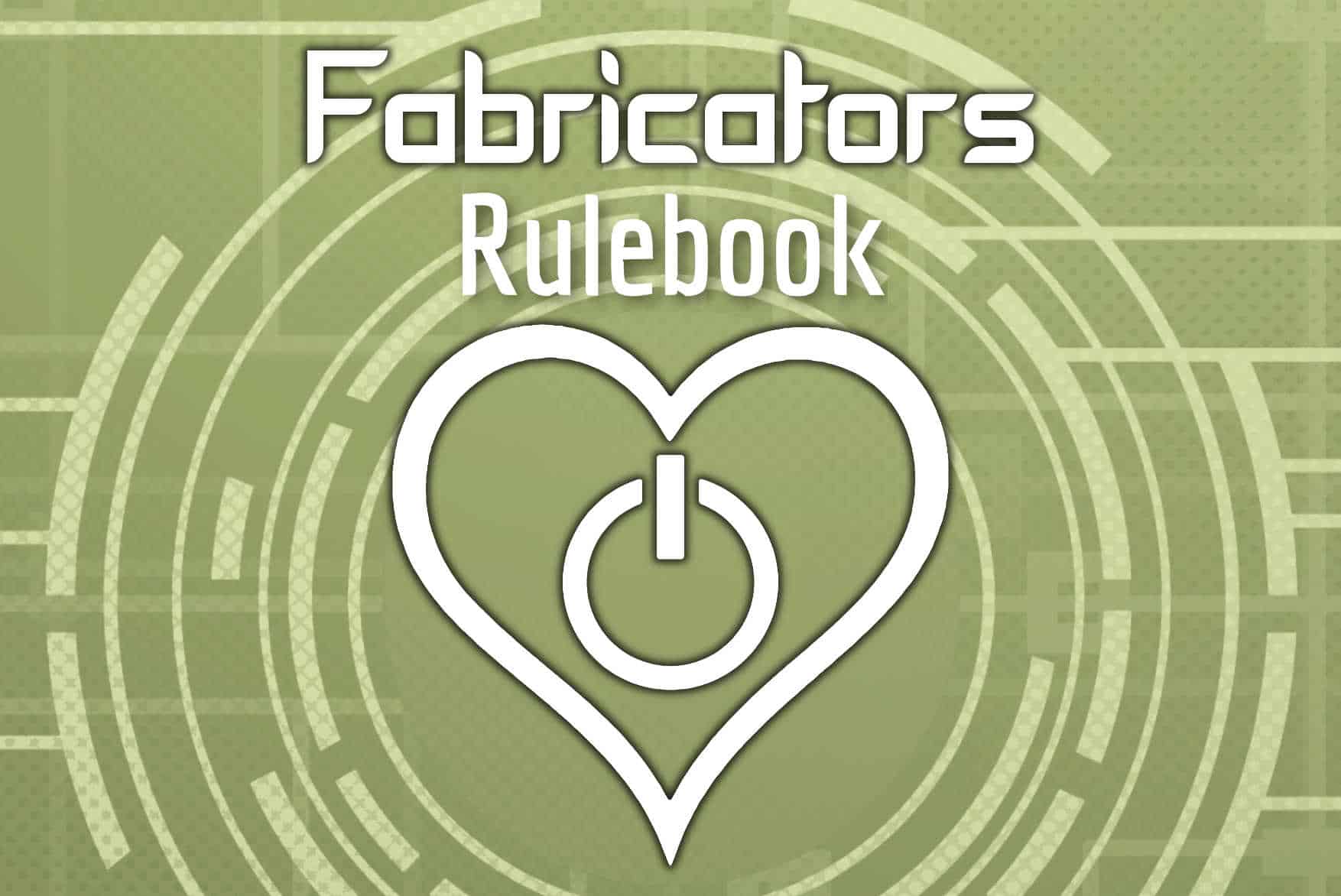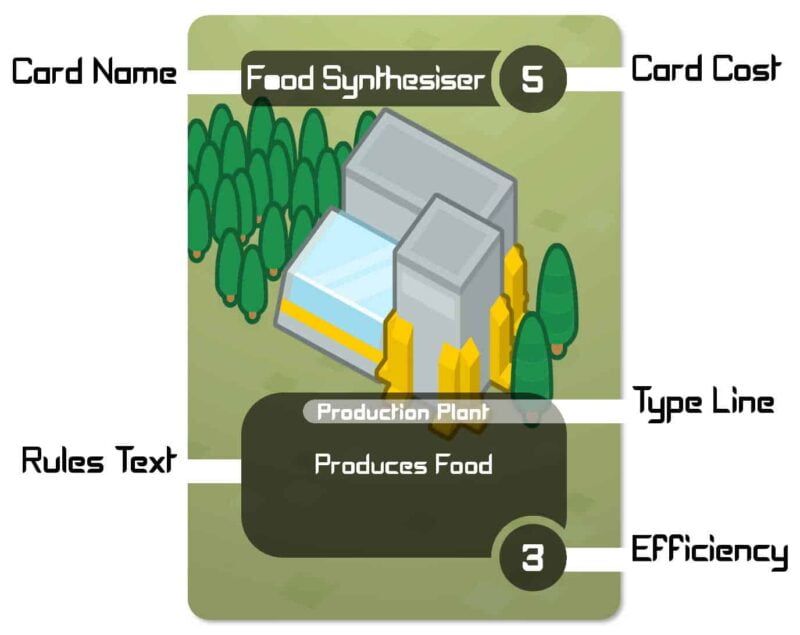
The future is not a place of trading and deals. It’s not a place of cutthroat impossibility and hyper-inflated corporate power. It was a fanciful idea, espoused by people who loved money more than people, that the future would be a place of unbound markets. It was by setting aside our cruelties, restructuring our economies, and dismantling the machinery of oppression that we finally took to space, took the stars, and began a new human era of peace and love.
In this age, most people don’t work, because they don’t have to. Automation has taken away the demand for labour, which in turn has made labour a choice, not a demand. It’s in that place that people turn to questions of industry or engineering because they find them personally satisfying; they work, as it were, for fun.
You are one of the volunteers for this most recent Fabrication sector. Each of you has selected this task to try and help build a maximally efficient production area on this new planetary colony. Your design will be tested for its efficiency, and, if it proves effective, that design will be adapted for use in larger productions.
You will 3d-print plants, recreation areas, cordon off areas of nature for protection, help distribute material and labour optimally, and care for yourselves and for the people who choose to work in your region.
Access
Fabricators is a game where you’ll need to be able to hold the cards, read them, keep your hand of cards hidden, and, if the game goes long, shuffle a deck of cards a few times.
Each player needs a small space in front of them where they can place their Fabricated buildings that are clearly separate from others’, and easy access to the decks of cards.
And always: Remember to respect the players and their needs.
Components
In your copy of Fabricators, you should have the following:
- 2 facing cards
- 104 Production Cards
- 1 Sequence card
- 5 Action cards
- 8 Demand cards
A Card Schematic
Each card in the Production Deck shows a schematic of a potential building for Fabrication. Here’s a run-down of what those schematics are saying:
- A card’s name indicates just what to call it. Except for Production Plant buildings, you can’t have more than one of each card with the same name.
- A card’s Cost indicates how much material it takes to Fabricate.
- A card’s Type Line indicates if it is a Production Plant building or not. Remember, you can only have multiple copies of Production Plants.
- A card’s Rules Text tells you any special rules this particular card has that change how it is meant to act once in play, or as part of fabricating it.
- A card’s Efficiency shows how much the card contributes to your sector. Since buildings are all fabricated to work together to some degree, your Efficiency rating is the sum of the Efficiency of all your buildings in play.
How To Play
In Fabricators, turn follows an order around the group; one player starts, then the next player acts, but each player’s actions influence the other players; if one player Fabricates, everyone will Fabricate.
Bear this in mind and plan accordingly.
Setup
Separate out the cards into the set of Action Cards, a deck of the Demand cards, and the Production deck. Pick a first player by whatever method you like (you can randomly assign Action cards and let the player with the lowest number go first, for example), and give them the Sequence card.
Play
Starting with the player with the Sequence card, each player picks an Action card. Then, when everyone has chosen, the actions executed in the order listed on the Action card. Each action card describes what you do, and each other player, and in what order:
1. Fabricate.

- You Fabricate one building. It costs 1 less than normal.
- Then, each other player can fabricate a building at full cost.
You Fabricate a building by taking the card out of your hand, setting it in your play area, then paying that card’s cost by discarding that many cards from your hand.
You can’t Fabricate anything you can’t pay for. You can only Fabricate one copy of each different Building, except for Production Plants. You can’t fabricate more than Twelve buildings in total.
2. Produce

- Each of your Production Plants produces resources.
- Each other player chooses one of their Production Plants, and it Produces resources.
To Produce, you take a card from the top of the Production Deck, and place it face-down underneath the Production Plant building that produces it. This is then a Stored resource in that building.
You can’t Produce endlessly! Each Production Plant can only have a maximum of seven cards stored.
3. Upload

- You Flip the top card of the Demand deck. Exchange two types of resources for cards.
- Each other player can exchange one type of resource for cards.
This is how you deliver stored raw materials to central control, in exchange for processed printable resources that you can use for Fabrication and other purposes—ie, more cards.
When you exchange cards, turn the top card of the Demand deck faceup. Then, take all the cards stored at one of your buildings, put them face-up in the discard pile, and then draw an appropriate number of cards off the Production Deck based on the exchange rate shown on the face-up Demand card.
When you want to upload a material, it has to be already stored in the building that produced it. If you want to know what kind of material is
stored in a card, you need to look at what that building produces—it’ll
say so on the text.
Whenever a player picks the Upload card, unless they have a building that lets them do otherwise, everyone uses the same Demand card’s values.
Remember that you have a maximum hand size, at the end of turn, of seven. So, you may want to save larger windfalls for particular ends.
4. Download

- Draw five cards, then discard three cards.
- Each other player draws two cards, then discards one card.
Every manager sometimes needs to get more options. Download lets you draw more cards from the Production Deck.
Whenever the Production Deck doesn’t have any more cards in it, just shuffle the Discard pile into it, and keep drawing.
5. Recycle

- You Draw a card at random from the discard pile.
- This is the only action that does nothing for the other players.
If there’s no card in the Discard pile, this action doesn’t do anything.
End Of Turn
Once all the actions have been performed, the turn ends; players discard cards from their hand down to their maximum hand size (normally seven), return all the Action cards to the centre, Cycle the Demand deck, and the player with the Sequence card hands it to the next player.
Running Out Of Cards
Whenever the Production Deck runs out of cards, shuffle the discard pile into it. If there are no cards left that can be shuffled into the discard pile—such as there are a huge number of cards stored—nobody can draw any cards.
If this persists for more than one turn, there’s been a Sector Arrest, and the system has collapsed in this sector. The administration locks the area down, comes to check on what’s happened, and considers this competitive experiment a failure. Sectors’ efficiencies are checked to see who might have had the most successful sector, but in these situations, nobody’s a winner, not really.
Terms
- Cycle: Take the top card of the Demand deck and put it on the bottom of the deck.
- Discard: Take a card from your hand and put it face-up in the discard pile. There’s only one discard pile for all players, and it is played face-up for visibility, and also to make sure it’s easy to tell apart from the Production Deck.
- Draw: Take a card from a place and put it into your hand. Unless otherwise specified (such as by the Recycle action card), you Draw cards from the Production deck. Cards like the Action Cards, Demand Cards, or Sequence card cannot be part of your hand.
- Store: When a building Produces, or a building’s special ability lets you Store a card, you put a card underneath it. By default, Stored cards come from the top of the Production deck (though some cards take them from other sources). You can’t look at Stored cards!
Winning
The goal of Fabricators is to make an efficient manufacturing sector that’s capable of supporting itself sustainably, and generating a surplus that can be used to develop and feed other communities. This is done by measuring efficiency.
When one player fabricates their twelfth building, the sector has reached assessment. Finish the current turn, then each player sets down their hands and checks the efficiency of their operation. The player with the highest efficiency has made the operation that’ll be used as the template for the rest of the sector, and they are the winner of this game.
Specific Cards
- Crystal Resonator: If multiple players have Crystal Resonators, just handle them in order; one player looks at the top card of the Demand deck, decides if they want to Cycle it, then uploads their produce; then each player following use the rates on that Demand card until play passes to the next player with a Crystal Resonator, who can look at the top card of the Demand deck, and if they prefer it, cycle the faceup Demand card and replace it with the card they looked at.
- Foundation Replicator: This card counts as a building only when it hasn’t anything fabricated on it. When you fabricate a building on this foundation, those two cards count as one building. If you fabricate a building onto a Foundation replicator, it still counts as having a Foundation Replicator.
- Goop-C Synthesiser: Normally you can only upload one produce at a time if you didn’t pick the Upload action. With this synthesiser, you can upload both Goop-A and Goop-B at the same time with a single Upload action. If you pick the Upload action and you have this building, you can treat your Goop-A and Goop-B as a single product (though they can each be worth a different numbers of cards).
You could, with this building, choose to Upload, and on your turn Upload Goop-A, Goop-B, and Food, for example. - Signal Storage: When you Fabricate this building and it copies another building, its name is still Signal Storage. It does all the things that card would do when it was Fabricated (such as Slow-Yield Fabricator), but it doesn’t mean you can’t Fabricate another Slow-Yield Fabricator.
- Slow-Yield Fabricator: If the final card the Slow-Yield Fabricator yields has the same name as an existing building you have, and it isn’t a Production plant, it doesn’t fabricate and instead put it into the discard pile.
Credits
Game, Rulebook, Some Art: Talen Lee
Other Resources: Game-Icons.net, Kenney Game Assets, 1001Fonts
Made With: GIMP, Scribus, Microsoft Word, and a two decks of cheap playing cards I drew on with pen
Special Thanks
To Æryn, for logical space reasoning
Kat, for being righteously angry about colonialism
Dani, for being enthusiastic about this game
Fiora, for getting me thinking about 3d Printing
Bax, Rory, and Golbutt for the Commulism
Fox and Elli for helping with the Fail State problem

